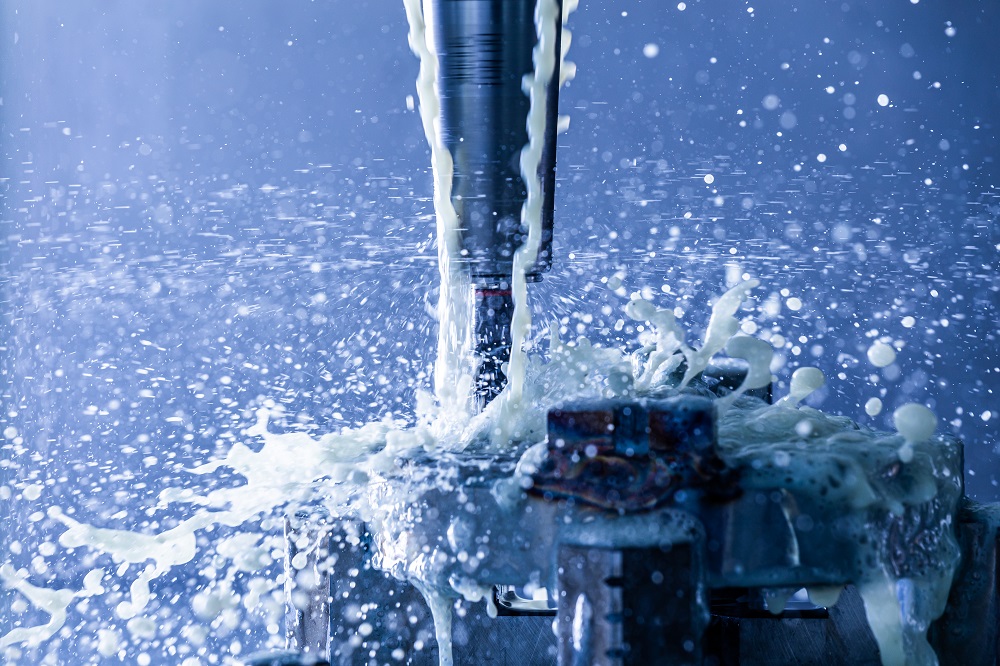All the heat generated during the machining process needs to be managed safely. Chilled systems, or chillers, use air or cold water for the controlled cooling of the machines being used and the metals being machined. This helps keep the temperature down at the point of contact and protects the end products in stamping, laser cutting, electrical discharge machining (EDM), and other applications while keeping the operators safe.
One of the reasons why metalworking shops used chilled systems is because they can provide more horsepower for heavier machining. They can also mill a variety of materials. For example, some shops that handle metalworking applications for aerospace may use chilled systems. However, having one on the shop floor means that several things need to be considered when choosing and optimizing coolant.
The Difference in Chilled Systems
For metalworking shops using oil-based coolant, a chilled system makes almost no difference in fluid performance. However, for those that are using a full synthetic coolant, foaming may become an issue and needs to be monitored.
This is because full synthetic coolants use what is known as a “cloud-point” defoamer. These defoamers are sensitive to temperatures, and if the chiller takes in the fluid at or below the cloud-point, the fluid will foam significantly, which can harm the tooling and/or the finished product. For shops running a chiller below room temperature, they will need low cloud-point defoamers.
When choosing a coolant for chilled systems, it’s important to look for one that has a cloud-point several degrees below the set point temperature of the chiller. That’s because the actual temperature at the contact point might be lower. For example, a chiller might be set at 72 degrees F, but the temperature at the contact point of the heat exchanger could be 68 or 69 degrees F.
Optimizing Coolant for Chilled Systems
There are several ways to make sure that coolant is optimized for chilled systems. The biggest concern will be the cloud-point defoamer. If too much foam forms, it can run coolant out of the system and onto the floor, creating a safety hazard. It can also be difficult to break up, so preventing foam is key. If synthetic coolant produces foam, it may be time to change to a different coolant.
The other issue that must be addressed is residue in the heat exchange. Conducting regular machine maintenance and cleanup will not only keep chilled systems running and extend the life of the coolant, but it can also help prevent bacterial growth and foam formation.
One thing that metalworking shops do not need to worry about with chilled systems is changing out their coolant more frequently. As long as best practices for coolant maintenance are followed, the shop should be able to get the same lifespan from the coolant as they would from a non-chilled system.
For example, removing tramp oil, cleaning machine sumps, and using proper filtration will all help to keep coolant in top condition and protect machines and materials.
There are plenty of metalworking shops using chilled systems, and making sure that the coolant is right for the system will help prevent foaming that can lead to damaged tools. For help choosing the right coolant or optimizing existing coolant for your systems, call +1 800-537-3365 or email us at [email protected].

